In a place in South China in 2017, a busy day for a renewable resource recycling station began. Workers are transporting the decommissioned first-generation power batteries (low-speed electric vehicle lead-acid batteries) to trucks heading for battery dismantling units.
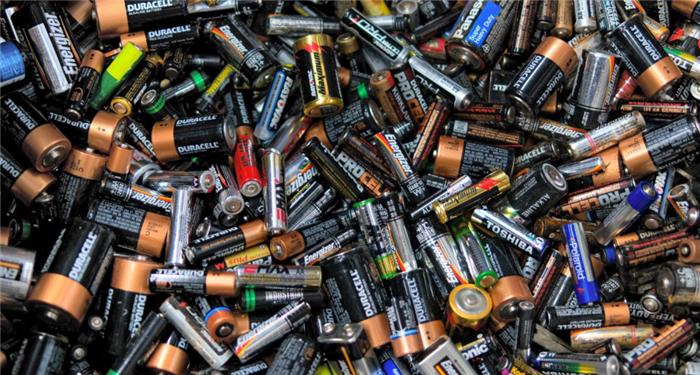
When the staff was seen pumping the power battery electrolyte into the toilet, the owner of the recycling station explained to the reporter: "The solution is poisonous. Don't you fall down the toilet?"
This is the report of the unannounced visit to a power battery recycling station by "First Financial" last year.
Although the report involved a two-wheeled lead-acid battery for a battery car, the lithium ion battery decommissioned by a new energy vehicle is equally harmful to the environment. As the new forces of the new energy makers rise, it seems that few people are concerned about how to deal with the retiring of the power batteries carried by new energy vehicles.
The first batch of new energy vehicle power batteries is about to be retired. At the just concluded “two sessions,†relevant departments not only announced that they will continue to vigorously develop new energy vehicles, but also “recently focus†on the recovery of new energy vehicle power batteries.
On the surface, this is a logical and orderly move. I believe that after hearing the specific battery retirement data, it is not only the decision-makers in the Great Hall of the People but also all of us.
Exclaimed: We did not even have a trace of preparedness.
How many batteries will be retired?
China will face 200,000 tons of power batteries and be retired.
How come?
The average age of new energy vehicle power batteries is 5-6 years. The power batteries of commercial new energy vehicles are only 2-3 years old. This means that starting from 2018, China's first batch of new energy vehicle power batteries will enter the retirement period.
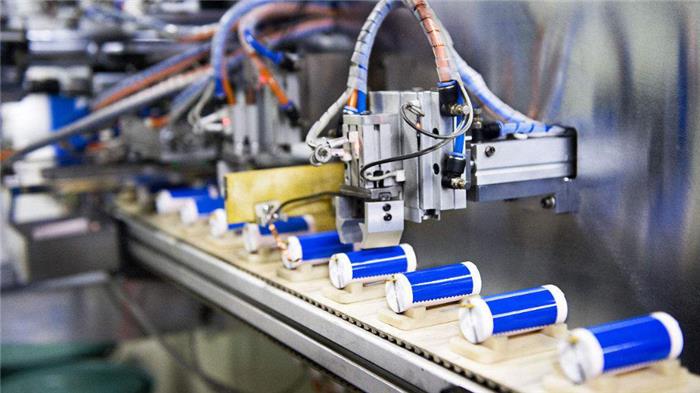
China Railway Research said: From the company's warranty period, battery cycle life, vehicle use conditions and other aspects of comprehensive calculation, after 2018 new energy automotive power battery will enter the scale of decommissioning, is expected to accumulate over 200,000 tons by 2020 (24.6GWh ) If 70% can be used for ladder utilization, approximately 60,000 tons of batteries need to be further dismantled.
200,000 tons of decommissioning power batteries can not be solved by private recycling stations. If a large number of lithium-ion batteries that have been retired from centralized disposal are improperly disposed, the resulting environmental pollution can be much worse than the electrolyte that is poured into the toilet.
Second, the status of power battery recycling
"Enemy is the enemy." What is the current status of power battery recycling? Car Jujun interviewed a person from a well-known battery supplier.
"Car Jujun:
Did you have a recycling plan in advance when power battery production?
"Industry: There is no real plan.
"Car Jujun:
Who is responsible for the current battery recycling responsibility?
“Industry figures: In fact, the automaker should be responsible, but the automaker will pass on to the battery supplier.
"Car Jujun:
At present, how is the new energy vehicle power battery recovered?
“Industry figures: At present, the use of ladders is considered, and the batteries are used to the limit and then dismantled.
"Car Jujun:
Is there a mature battery recycling process in the industry?
“Industry figures: The industry is currently exploring, and other national policies are issued.
This person in the industry is inconvenient to disclose the company’s specific recycling methods. It only gives “an analogy†to Ju Jujun: When power batteries reach the end of their useful lives, these decommissioned batteries will be sent to certain manufacturing plants. The use of energy storage batteries begins the second life cycle, which is the recycling of power batteries until they are completely scrapped.
However, in the dismantling session, people in the industry stated that they face many difficulties in the actual operation of the recovery and reuse of power batteries, and the power battery recycling market has also been in a disorderly state for a long time.
The famous battery suppliers, such as the Ningde era and BAK batteries, also use the last dismantling method. Collaboration with dismantling companies is also under the “all-in-one†model. There is no unified standard for the use and disassembly of power batteries.
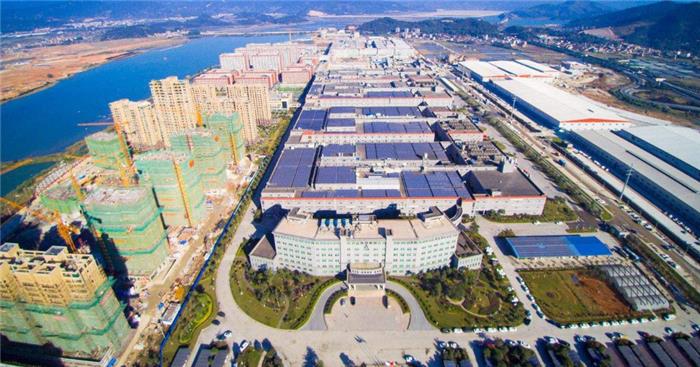
During the “two sessions†this year, the power battery supplier Tianneng Group stated: “It is very difficult for battery recycling companies with formal procedures to land in local areas. Many local governments do not welcome battery recycling projects. They are less taxed, employ less, and take risks. "This also shows that the last link of power battery recycling: the complexity and non-standard dismantling links.
Let us sum up the current status of China's power battery recycling:
The battery manufacturer is responsible for recycling;
The use of ladders is relatively mature, but the disassembly process is difficult;
The power battery recycling market is in a non-standard state;
There is an urgent need for substantive policies to formulate a mature recycling process.
Ps: This is only the status quo based on the fact that there are not so many decommissioned batteries.
Third, the "approach" came, but a good way?
On February 26, 2018, the Ministry of Industry and Information Technology, the Ministry of Science and Technology, the Ministry of Environmental Protection, the Ministry of Transport, the Ministry of Commerce, the General Administration of Quality Supervision, Inspection and Quarantine, and the Energy Bureau (seven ministries and commissions) jointly issued the Interim Measures for the Management of the Recovery and Utilization of Power Battery for New Energy Vehicles (hereinafter referred to as “Interim Measuresâ€). "Method").
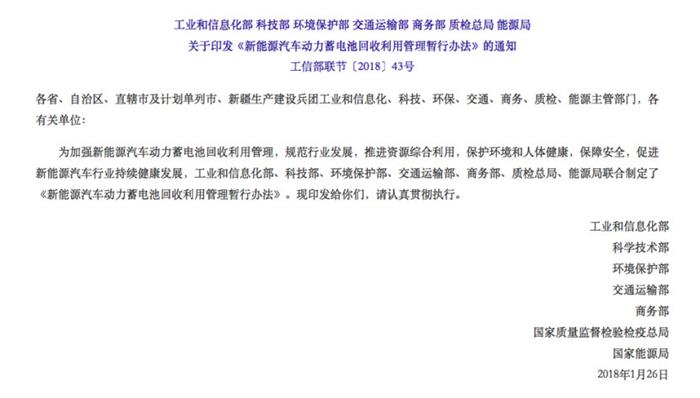
The Measures emphasizes first and foremost: Strengthen the management of the recycling and utilization of power batteries for new energy vehicles, standardize the development of the battery recycling industry, and promote the comprehensive utilization of resources. This is the biggest problem in China's power battery recycling.
But is this a good idea?
After Ju Jujun looked at the "measures" for the person in the industry, he said: "If you look at it, you can effectively implement it because the time is too tight."
However, there are indeed many places in the “Measures†that are difficult to implement, such as one of the new rules: Battery manufacturers should code batteries with automobile manufacturers. However, if the battery is deformed or the code is blurred, it will cause inefficiency or even operational errors.
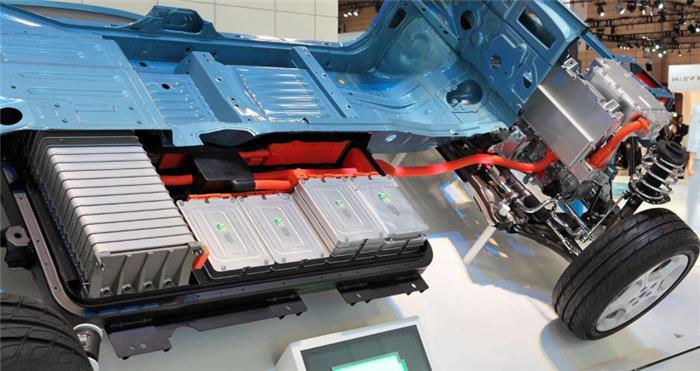
Li Longhui of the CNG Recycling Department also expressed concern about the “Measuresâ€: As the management of recycling of power batteries involves multiple links, can the relevant competent authorities quickly establish information sharing and linkage mechanisms? It is difficult to achieve in the short term.
Second, the "Measures" also emphasizes the main tone of the "who produces and who is responsible" power battery. For example, Tesla, its battery super factory can achieve 100% without the need for third-party power battery recycling, which brings the benefits of recycling is very high. In response to this, SAIC also proposed amendments to the "Measures": adding a new points policy to supervise the battery recycling obligations of vehicle manufacturers.
The "measures" are a good way, but it takes a long time to continuously verify and run in. In the face of the upcoming power battery retiring, what needs to be done is to carry out more intense implementation.
Fourth, the stones of other mountains can attack jade
Around the world, legislation and measures related to power battery recycling have begun long ago.
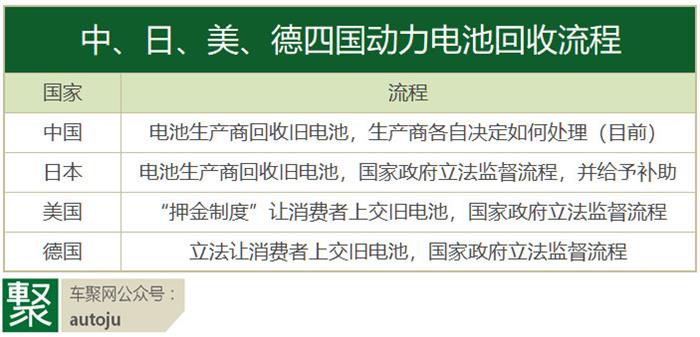
Taking the example of new energy pioneer Japan, in 1994 related battery suppliers drafted a full set of processes from production to recycling. These were developed and applied by the “Battery Recycling Coalitionâ€, a voluntary sponsoring organization of Japanese battery suppliers.
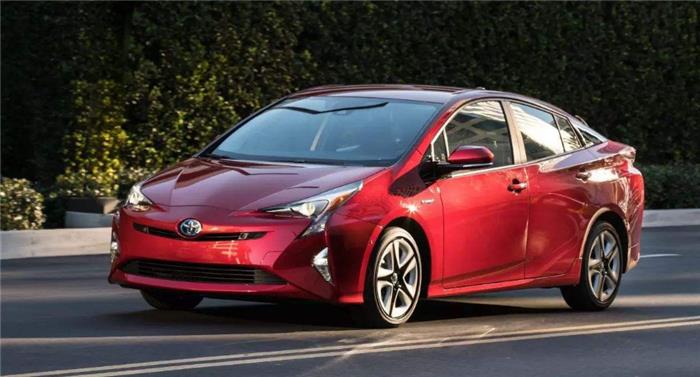
In 2000, the Japanese government began to intervene in the recovery of power batteries and formulate standards for recycling and dismantling. At the same time, a national subsidy is provided to the recycling unit to encourage the supplier to obtain a comprehensive and standardized recovery of the power battery.
Unlike Japan, the US battery recycling is "universalization." In addition to the establishment of the "American International Battery Association", it also legislates to establish a battery recycling deposit system, prompting every new energy vehicle consumer to voluntarily turn in decommissioned batteries. It is recycled and dismantled by the manufacturer.
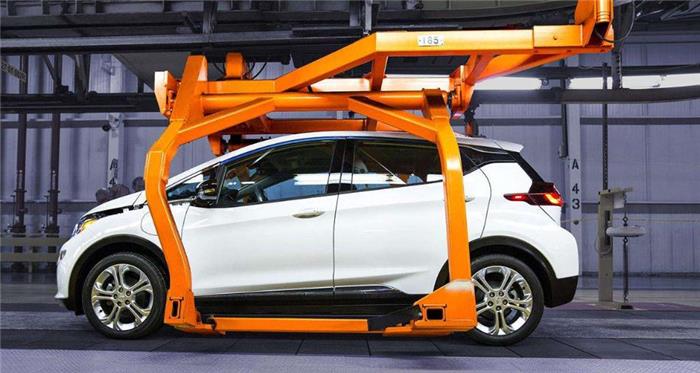
At the “two sessions†that just concluded, some reporters proposed whether or not they could use battery-based accounts to accurately manage decommissioned batteries. In fact, it has already been implemented in Germany. All powered battery products must be registered with the German government.
In addition, German legislation enables new energy vehicle consumers to have the right and obligation to hand over the decommissioned batteries and recycle them according to regulations. It also establishes state-level research institutions and continues to explore new dismantling technologies.
The international mainstream new energy vehicle factory: Tesla and Nissan are more active in battery recycling. In addition to national legislative supervision, they also actively explore the idea of ​​recycling batteries for the benefit of the people.
Tesla uses reclaimed batteries to reorganize its Power Wall home energy storage devices, and even continues to invest the recycled batteries in the community's energy storage equipment program, which can meet the power needs of 3-4 hours after a local power outage. Nissan is also planning to recycle batteries into household energy storage equipment to reduce costs.
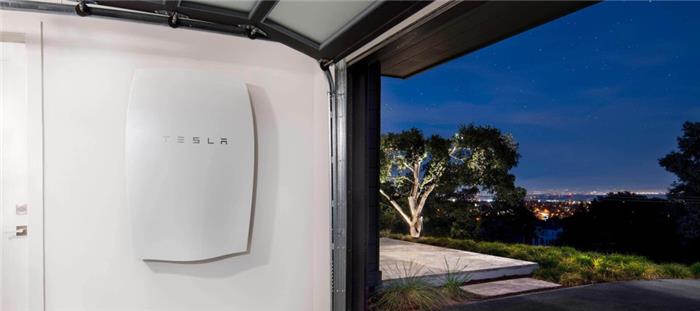
In general, foreign power battery recycling is jointly completed by government legislation and market regulation, and national laws and regulations are used as benchmarks for power battery recycling.
For our country, we need to learn from foreign mature systems and innovative ideas. However, legislation and regulations are not difficult. The most difficult is the implementation of tight deadlines and the need to cultivate the concept of universal supervision. The initiative of new energy vehicle consumers for battery recycling will increase the efficiency of battery recycling services.
Car gather together
There is always some falling thought behind the madness.
The "two sessions" have shown that by 2020, the production and sales volume of China's new energy vehicles will reach 2 million vehicles, and the number of new energy vehicles will reach 5 million by that time.
However, it is also expected that the decommissioned battery will reach 350,000 tons in 2025. How much work is needed for proper and effective recycling? Faced with the sudden retreat of power batteries, we had no effective precautions in advance.
From the recent cooperation between new energy car companies and battery suppliers, we can see a glimmer of hope in jointly formulating a power battery recycling plan. It is effective as a buffer before formal regulations are implemented.
But in the end, it is related to everyone in the recycling process. The universalization is the most difficult thing to do. Just as the staff at the beginning of the article poured the electrolyte into the toilet? Because there is no electrolyte power battery can sell a good price.
Finally, we hope that the era of new energy vehicles will bring true zero pollution.
Glass Microfiber Filter Media For Air ASHRAE FILTER :F6-F9
Ashrae Fiberglass Filter Media are comprised primarily of glass microfibers and are produced with a wet laid process similar to those used for the production of paper. It's an ideal raw material to produce air filters. It's efficiency ranges from F6-F9 with low pressure drop and good strength.
Fiberglass F9 Air Filter Paper,Fiberglass F8 Air Filter Paper,Fiberglass F7 Air Filter Paper,Fiberglass F6 Air Filter Paper,
ASHRAE :
Grade: F9 F8 F7 F6
Efficiency(≥%): 95 90 80 60
Basic Weight (+-5g/m2) : 70 70 70 70
Thickness (±0.02mm@100kpa ) : 0.34 0.34 0.34 0.33
Air Resistance Pa @5.3cm/s: 88 35 33 20
Tensile Strength 1200 1200 1200 1200
Stiffness: 1200 1200 1200 1200
ASHRAE grades (F6-F9): ordinary air-conditioning system, gas turbine air intake, air compressor, etc.
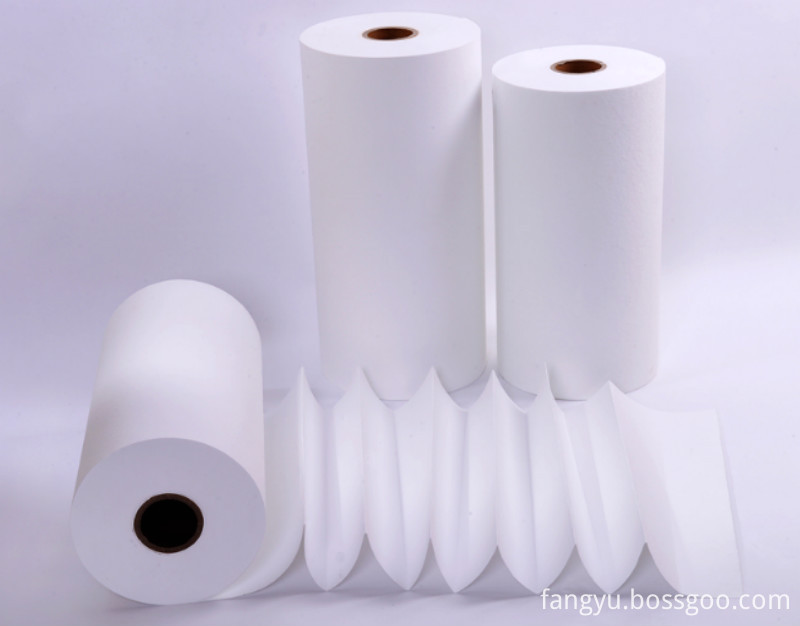
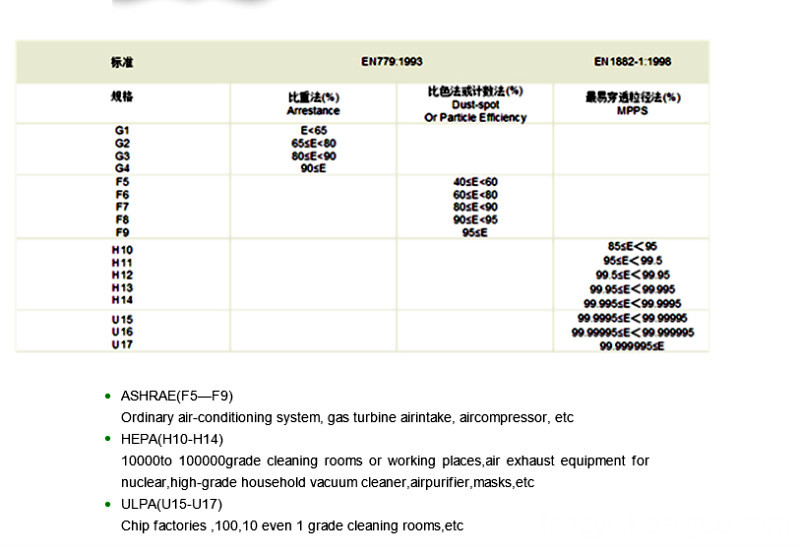
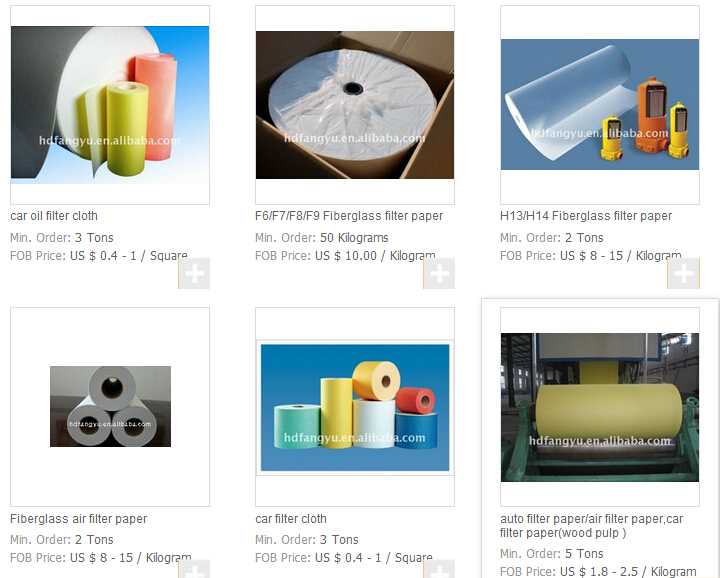
Glass Microfiber Filter Paper of ASHRAE Grade(F6-F9)
Micro Fiberglass Filter Paper,Fiberglass F8 Air Filter Paper,Ashrae Fiberglass Filter Media,F6 Glass Microfiber Filter Paper
Hebei Fangyu Trade Co., Ltd. , https://www.filtersmaterial.com
![<?echo $_SERVER['SERVER_NAME'];?>](/template/twentyseventeen/skin/images/header.jpg)